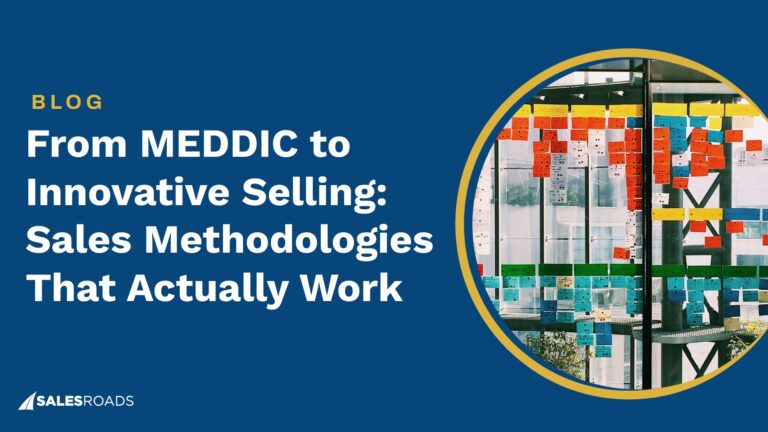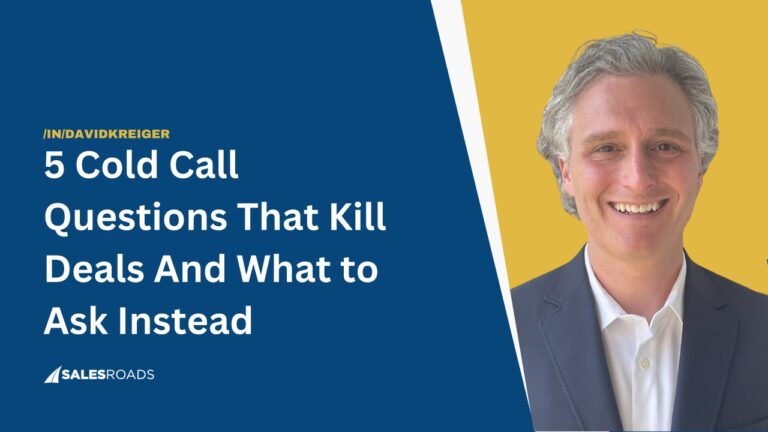A strong B2B sales pitch is your tool to drive new business. Simply put, it’s a concise and persuasive message that highlights the value proposition of your product or service. Effective sales conversations rely on having a well-crafted pitch.
Why the Sales Pitch Is Still So Important?
You might wonder if the classic B2B sales pitch has become a relic of the past. With information readily available online and buyers empowered by self-service research, is there still a place for a salesperson’s persuasive powers? The answer is a resounding yes.
While the landscape has changed, the core purpose of the sales pitch remains vital: clearly communicating value. A well-crafted pitch cuts through the noise and connects with potential customers on a deeper level. It’s your opportunity to showcase how your offering uniquely addresses their specific needs and challenges.
Think of your sales pitch as a conversation starter, not a scripted monologue. The B2B sales pitch remains a cornerstone of successful sales because it cuts through information overload, builds trust and rapport, highlights value proposition, provides an opportunity for differentiation, and guides the sales conversation.
What Makes a Successful B2B Sales Pitch?
The art of the B2B sales pitch is more relevant than ever. But what separates a forgettable presentation from a conversation that drives sales? Here’s the secret: Successful pitches focus on the customer, not the product.
Crafting a winning sales pitch requires a strategic approach that prioritizes these key elements:
- Customer focus: Ditch the generic product spiel. Research your prospect’s business, understand their pain points, and tailor your message to address their specific needs.
- Value proposition: Features are a dime a dozen. Focus on the value proposition – how your offering solves their problems, improves efficiency, or boosts their bottom line.
- Compelling storytelling: People connect with stories. Weave data, case studies, and success stories into your pitch to paint a clear picture of the positive impact your solution can deliver.
- Credibility and trust: Back up your claims with data, industry insights, and social proof like customer testimonials. This builds trust and establishes your company as a reliable partner.
- Clear call to action: A strong pitch doesn’t end on an ambiguous note. Conclude with a clear next step, whether it’s a demo, a free trial, or a consultation. To ensure this next step is effectively acted upon, implement effective follow-up strategies that keep the conversation going and drive commitment.
Good vs. Bad Sales Pitches
Not all sales pitches are created equal. The difference between a compelling conversation and a forgettable monologue lies in the approach.
Let’s dissect the hallmarks of a good B2B sales pitch compared to its less effective counterpart.
Characteristics of a Good Sales Pitch + Examples
A good sales pitch is a laser-focused conversation built on understanding your prospect’s needs. Here’s what makes it shine:
- Clarity and focus: Ditch the jargon and technical overwhelm. Explain your offering in clear, concise language tailored to the prospect’s level of understanding.
Instead of saying, “Our AI-powered marketing automation platform leverages synergistic algorithms,” try, “Imagine streamlining your marketing tasks with a platform that automates repetitive processes, freeing you to focus on strategic initiatives.”
- Engagement and relevance: People don’t buy products; they buy solutions. Engage the prospect by highlighting how your offering directly addresses their specific challenges and goals.
Instead of saying, “We offer a comprehensive marketing solution,” try, “We understand you’re facing increased customer acquisition costs. Our solution can help you optimize your marketing campaigns, personalize outreach, and generate qualified leads, ultimately reducing your cost per acquisition.”
- Strong call to action: Don’t leave the prospect hanging. End your pitch with a clear next step, whether it’s a demo, a free trial, or a consultation.
Instead of saying, “Let me know if you have any questions,” try this: “Would you be interested in a quick demo to see how our platform can help you streamline your marketing and reduce costs?”
Common Pitfalls in Bad Sales Pitches + Examples
A bad sales pitch can damage your credibility and leave a lasting negative impression. Here are some common pitfalls to avoid:
- Lack of preparation: Winging it is a recipe for disaster. Research your prospect’s business, understand their industry, and anticipate their potential challenges.
Example: Walking into a meeting with a generic pitch for a generic audience is a surefire way to lose the prospect’s attention.
- Overloading with information: Information overload is overwhelming. Focus on the key benefits that align with the prospect’s needs, and avoid bombarding them with technical details.
Example: Listing every single feature of your product without explaining how it solves a specific problem for the prospect is a waste of time.
- Poor understanding of the prospect’s needs: A one-size-fits-all approach doesn’t work. Take the time to understand the prospect’s unique challenges and tailor your pitch accordingly.
Example: Generic pitches that focus on your product’s greatness rather than the prospect’s specific needs fall flat.
7 Top B2B Sales Pitch Examples to Inspire Your Own
Crafting a winning B2B sales pitch requires understanding your audience and tailoring your message to resonate with their needs.
Here, we explore different approaches to inspire your own sales pitch creation:
Example 1: Solutions-Based Pitch
Focus: Understand the prospect’s challenges and present your offering as the solution.
“We understand you’re struggling with lead generation. Our marketing automation platform can help you streamline your campaigns, personalize outreach, and generate qualified leads, ultimately increasing your sales pipeline.”
Example 2: Value-Driven Pitch
Focus: Highlight the tangible benefits your product or service delivers.
“Our project management software can help your team improve efficiency by 20%. This translates to time savings, cost reduction, and the ability to take on more projects.”
Example 3: Storytelling Approach
Focus: Connect with the prospect on an emotional level through a relatable story.
“Imagine a company that saw a 30% drop in customer churn after implementing our customer service solution. They achieved this by personalizing the customer experience and resolving issues quickly. This is the kind of impact we can help you achieve too.”
Example 4: Product Demonstration Pitch
Focus: Showcase the product’s features and functionalities through a live demo.
“Let’s walk through a quick demo of our software. You’ll see firsthand how it can automate your repetitive tasks and free up your team to focus on more strategic initiatives.”
Example 5: ROI-Focused Pitch
Focus: Quantify the return on investment (ROI) the prospect can expect.
“Our solution can help you reduce your marketing expenses by 15% while increasing qualified leads by 20%. This translates to a significant boost in your marketing ROI.”
Example 6: Customer Success Story Pitch
Focus: Leverage the positive experiences of existing customers to build trust.
“Company X saw a significant increase in customer satisfaction after using our product. Let me share their success story and how we can achieve similar results for you.”
Example 7: Personalized Solution Pitch
Focus: Tailor your pitch to the prospect’s specific needs and industry challenges.
“We’ve worked with companies in your industry facing similar challenges to yours. Our solution can be customized to address your unique pain points and help you achieve your business goals.”
Sales Pitch Tips for B2B Success
Crafting a compelling sales pitch is an art form. It’s about capturing attention, conveying value, and ultimately driving sales conversations forward.
Here are some key sales pitch tips to elevate your approach and achieve success:
Start with a Strong Opening
The first impression matters. According to the statistics, people will have a solid impression of who you are within the first seven seconds of meeting you. That’s why openers play a crucial role, and discovering some creative opening sales pitch examples is your go-to option to start with.
Grab the prospect’s attention with a thought-provoking question relevant to their industry that highlights a common pain point, or a relatable anecdote that sets the stage for your message.
Focus on Benefits, Not Features
People don’t buy features, they buy solutions to their problems. Highlight the tangible benefits your offering delivers and how it improves their business.
Instead of saying, “Our CRM software has a robust contact management system,” try, “Imagine streamlining your sales process by automating repetitive tasks and centralizing all your customer data in one place. Our CRM can help you close deals faster and improve customer relationships.”
Make It All About the Customer
Shift your focus from your product to the prospect’s needs. Research their challenges, understand their goals, and tailor your pitch accordingly. Ask insightful questions to uncover their specific pain points and demonstrate empathy for their situation.
By positioning yourself as a trusted advisor, you build rapport and establish credibility.
Use Data and Case Studies
Back up your claims with data and real-world examples. Showcase the success stories of similar customers to build trust and credibility. Use statistics, industry reports, and quantifiable results to demonstrate the effectiveness of your solution.
Share case studies that illustrate how your product or service helped companies in their industry achieve similar goals.
Address Pain Points Directly
Don’t shy away from acknowledging the prospect’s challenges. Demonstrate your understanding of their pain points and present your solution as a remedy.
For example, if you’re selling marketing automation software, you might say, “We understand that keeping up with lead generation and nurturing can be a challenge. Our marketing automation platform can help you streamline your campaigns, personalize outreach, and generate qualified leads, freeing up your team to focus on closing deals.”
Build an Emotional Connection
People connect with stories and emotions. Weave a narrative that resonates with the prospect’s aspirations and challenges. Help them visualize the positive impact your solution can have on their business. Use storytelling techniques to paint a picture of their success story after implementing your product or service.
Close with a Clear Call to Action
Don’t leave the prospect hanging. End your pitch with a clear next step, whether it’s requesting a demo, scheduling a consultation, or starting a free trial. Make it easy for them to take the next step by offering a specific action and outlining the benefits they’ll receive.
Continuously Improve Through Feedback
Feedback is a gift. Actively seek feedback from prospects and colleagues to refine your pitch and identify areas for improvement. Ask for feedback after each sales conversation and use it to tailor your approach for future interactions.
You can also record yourself practicing your pitch and review it to identify areas for improvement in delivery and content.
By incorporating these sales pitch tips and leveraging the power of the examples above, you can transform your sales conversations, build stronger relationships with prospects, and ultimately close more deals.
Common Mistakes to Avoid in B2B Sales Pitches
A well-crafted B2B sales pitch can be a powerful tool for driving sales conversations and closing deals. However, even the most enthusiastic salesperson can fall victim to common pitfalls.
Here, we explore some critical mistakes to avoid in your sales pitch to ensure maximum impact:
Overloading with Information
Nobody wants to sit through a technical lecture. Focus on the key benefits that align with the prospect’s needs, and avoid overwhelming them with excessive features and functionalities. Remember, clarity and conciseness are key.
Instead of listing every detail, explain how your offering simplifies their processes or solves a specific problem. If there are complex features, offer to address them in a follow-up discussion.
Failing to Personalize the Pitch
A generic pitch for a generic audience is a recipe for disengagement. Take the time to personalize your pitch by researching the prospect’s company, industry, and specific challenges.
This demonstrates your understanding of their unique situation and builds trust. For instance, instead of a generic opening about the importance of marketing automation, you could say, “I see that Company X has been focusing on lead generation through content marketing. Our marketing automation platform can help you streamline your content creation process and personalize outreach for better lead nurturing.”
Neglecting to Follow Up
The sales conversation doesn’t end with your pitch. Following up promptly after your interaction demonstrates your professionalism and keeps the momentum going.
Explore resources on B2B sales pitch tips to craft a compelling follow-up email that summarizes your key points and offers a clear next step, such as a demo or consultation. Personalize the email by mentioning specific points discussed during your conversation.
Lack of Clear Value Proposition
Your prospect needs to understand the tangible value your offering brings to their business. Articulate a clear and compelling value proposition that highlights the benefits and positive impact your solution will deliver.
Focus on how it solves their problems, improves efficiency, or boosts their bottom line. Quantify the value proposition whenever possible. For example, instead of saying your project management software helps teams collaborate, say, “Our software can improve team collaboration by 20%, leading to a 15% reduction in project completion times.”
Inadequate Understanding of the Prospect’s Needs
A successful B2B sales pitch is rooted in understanding the prospect’s challenges and goals. Don’t launch into your pitch right away. Actively listen to their concerns, ask insightful questions to uncover their pain points, and tailor your message accordingly. By demonstrating empathy and understanding, you position yourself as a trusted advisor.
Focusing Too Much on Your Product Rather Than the Prospect’s Problems
Your pitch shouldn’t be a product brochure in disguise. Shift the focus from your product’s features to the prospect’s problems. Highlight how your solution addresses their specific pain points and how it can help them achieve their desired outcomes.
Frame your pitch around the challenges they face and how your offering can help them overcome those obstacles.
Bottom Line
Today, grabbing a lead’s attention is tougher than ever. That’s where a well-crafted B2B sales pitch becomes a game-changer.
Knowing how to craft a winning pitch isn’t just a nicety, it’s the fuel that keeps your sales pipeline flowing. By avoiding common mistakes and incorporating the B2B sales pitch tips and examples explored here, you can transform your sales conversations and turn prospects into customers.










